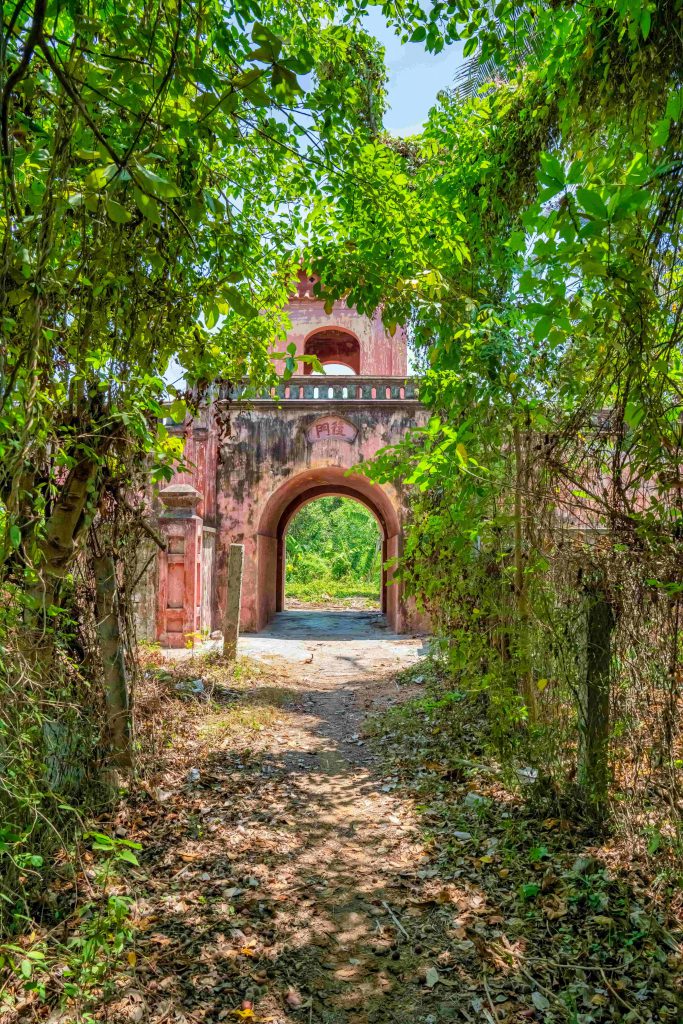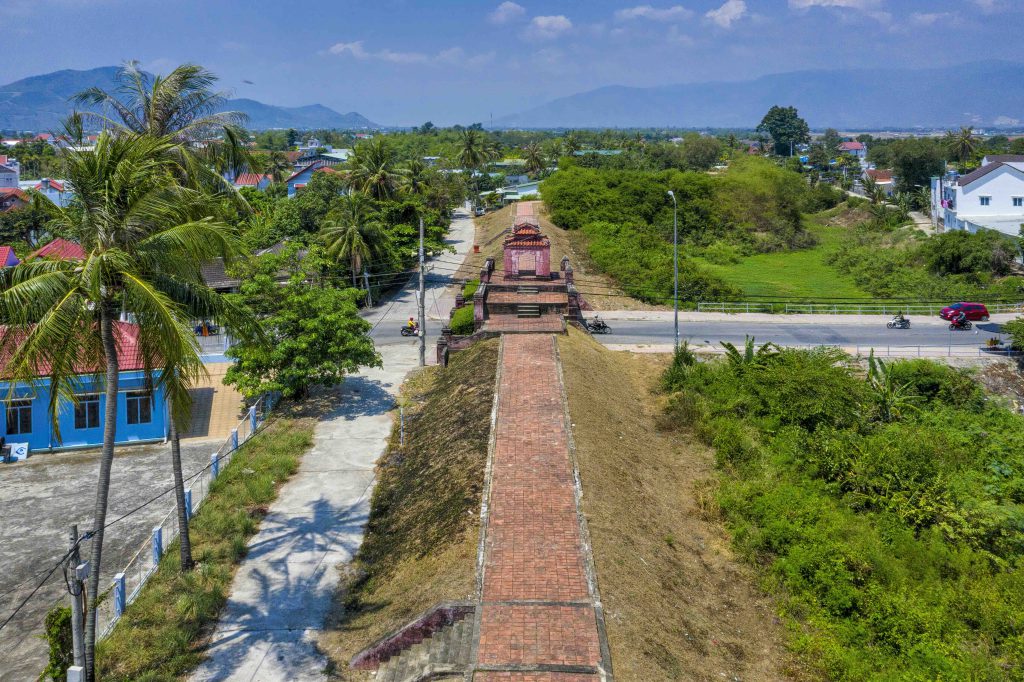Story: Hoang Thu Uyen
Photos: Minh Tu
Few visitors to Nha Trang in Khanh Hoa Province would expect this modern coastal city to conceal an ancient citadel. Built in the late 18th century, Dien Khanh Citadel once served as a strategic stronghold during the southward expansion of the South Central region.
A strategic site
From the city center, follow 23/10 Avenue for about 10 km to Dien Khanh Commune, then turn right onto Ly Tu Trong Street. After roughly 500 meters, you will arrive at the eastern gate of Dien Khanh Citadel; continue another 700 meters to reach the western gate.
Here, visitors can see that the citadel was built using Vauban-style fortification techniques similar to those applied at the Imperial Citadel of Hue, the Hanoi Citadel, the Octagonal Citadel (Thanh Bat Quai) in Ho Chi Minh City, and other provincial citadels built under the Nguyen dynasty. Vauban refers to Sebastien Le Prestre de Vauban (1633–1707), the French military engineer famed for developing innovative fortification methods in Europe during the reign of King Louis XIV.

Dien Khanh Citadel was laid out in the shape of an irregular hexagon. Its ramparts were earthen embankments reinforced with thorny bamboo for greater strength. The gates were arched brick-and-lime structures, each topped with a square watchtower roofed in interlocking yin-yang tiles, once used for observation. Each gate complex covers an area about three meters wide and 15 meters long, with stairways on both sides for access. From the surviving sections of rampart, the walls are estimated to have stood about three meters high, with a crest approximately five meters wide.
According to official chronicles, Prince Nguyen Phuc Anh (later Emperor Gia Long) ordered the construction of Dien Khanh Citadel in 1793, recognizing the site’s strategic position and importance for regional security.
The Dai Nam Nhat Thong Chi records that after surveying the terrain, the prince chose to build the citadel on the site of the former Hoa Bong Outpost. (Under the Nguyen Dynasty, such military outposts were established for defense and to control trade at key points.) The citadel’s walls were made of rammed earth, while the gates were built of brick. In traditional units, the circumference “measured 636 truong 7 thuoc 4 tac and had a height of 7 thuoc 5 tac.”
When completed, the citadel had six gates, each topped with a tower. Earthen bastions stood at the four corners, and a moat encircled the walls, with army camps positioned beyond. Each gateway had a drawbridge to cross the moat. Later, two of the gates were removed. Situated in a position of natural strength, ringed by mountains and rivers, the citadel was easy to defend and difficult to attack.
Other historical records note that the prince mobilized military units and requisitioned 3,000 residents from Binh Thuan and 1,000 from Thuan Thanh to construct the citadel. The initial earthworks were completed within one month. In subsequent years, more work was done, with official residences, storehouses, and a jail gradually incorporated, creating a more complete complex designed to be easy to defend and difficult to assault. Under Emperor Minh Mang, in 1831, Dien Khanh Citadel became the provincial seat of Khanh Hoa upon the province’s establishment, housing the administrative organs of the monarchy.

A tourism hotspot
Nestled in one of the world’s most beautiful bays, Nha Trang is celebrated for its stunning scenery, modern and elegant architecture, the ancient Cham site of Thap Ba Ponagar, and the refined Lau Bao Dai – the residence of Bao Dai, Vietnam’s last emperor. Alongside these attractions, a visit to Dien Khanh Citadel allows you to literally touch history in every brick and capture unique photos to share on social media or keep as memorable travel keepsakes.
Beneath the brilliant sun of this serene coastal city lie mossy, timeworn bricks, yin-yang roof tiles, and a quiet audience courtyard that buzzed with activity centuries ago. Today, these elements come together to form a striking backdrop for unforgettable photos.
Having stood for more than two centuries, thanks to its unique features, Dien Khanh Citadel was designated a National Historical and Cultural Site on 16 November 1988. In recent decades, as tourism has become a key economic sector, the citadel has benefited from ongoing conservation efforts. Its architectural elements are gradually being restored, paving the way for the development of more distinctive, location-specific tourism experiences in Khanh Hoa Province.










